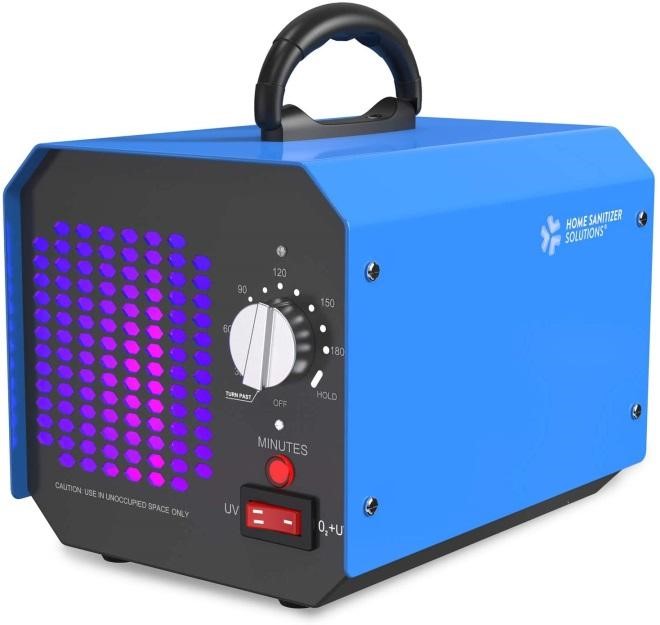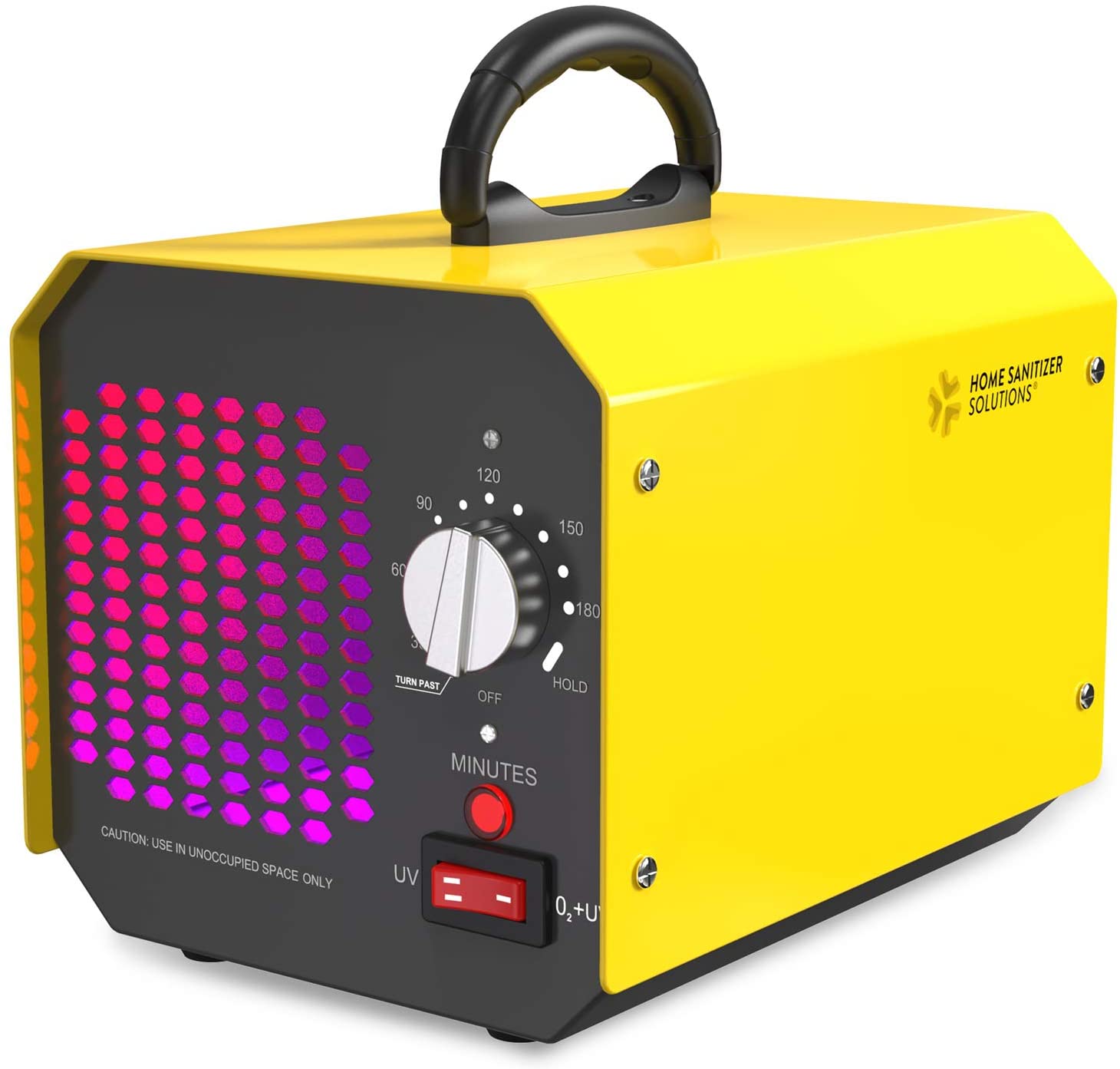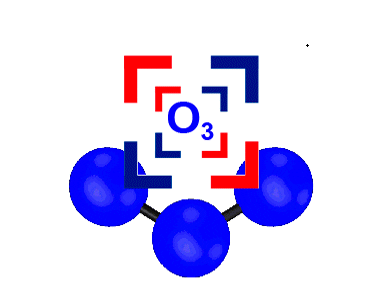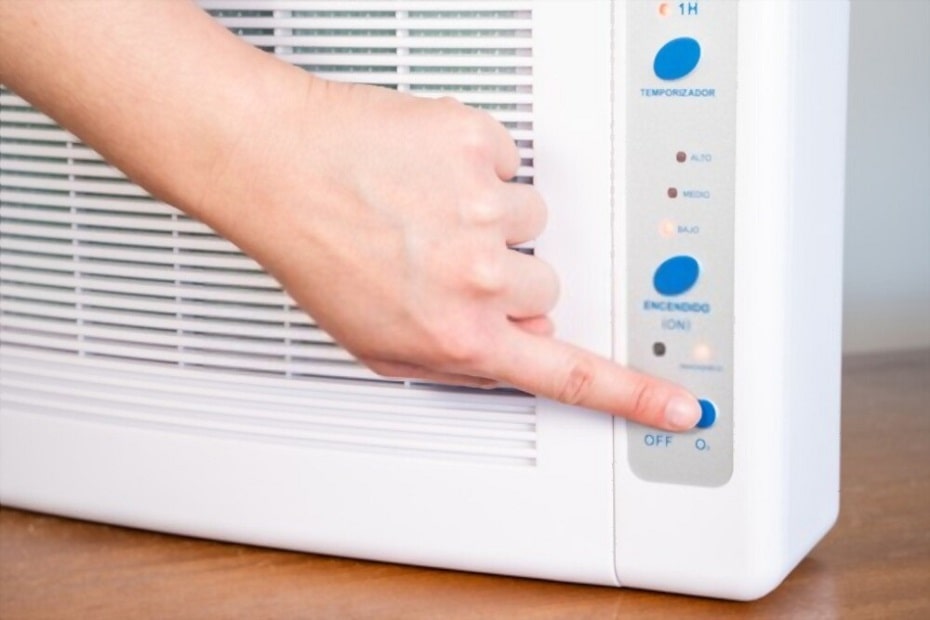How Long to Wait After Using Ozone Generator? Before dissipating back into oxygen, ozone lasts 30 minutes to 4 hours in the air. Higher ozone concentrations may take 3–4 hours to evaporate, while lower doses may take less than 2 hours. It is advised that you wait 4 hours after utilizing an ozone generator before returning to the room.
Ozone generators are being marketed as a cost-effective way to eliminate indoor pollutants and odors. However, ozone has been linked to a variety of health problems. According to available scientific information, safe-to-breathe ozone concentrations are unlikely to be beneficial in mitigating indoor air pollution. Ozone generators are available from a variety of Suppliers and Companies, as well as a variety of manufacturers and distributors, and there are many Filtration Equipment and Systems on Linquip.
There is a comprehensive list of ozone generator services on the Linquip website that covers all of your needs. Linquip suppliers can assist you with this. Please contact Linquip’s Ozone Generator Experts to learn more about how to connect with a diverse group of service providers who consistently deliver high-quality products.
In this post, we will go over the dangers of ozone generators as well as how to utilize them safely.
How We Write This Blog Post about How Long to Wait After Using Ozone Generator
According to available scientific information, safe-to-breathe ozone concentrations are unlikely to be beneficial in mitigating indoor air pollution. Therefore, it is important to use ozone generators safely and responsibly. In this blog post, we will go over the dangers of ozone generators as well as how to utilize them safely. We have researched extensively on this topic and gathered information from reliable sources such as the EPA and scientific journals. Our team of experts has analyzed this information and provided you with a comprehensive guide on how to use ozone generators safely. We hope that this post will help you understand how long to wait after using an ozone generator and how to use them safely.
How Long Does Ozone Last in Air?
As the EPA has often told us, an ozone generator can be a deadly instrument. We would not even start the machine if we had the option, but that is not the point of this piece. The official guideline from most ozone producers is what we have here. We’ll go over everything you need to know about ozone, including how long it takes for it to disperse and how it interacts with microbes. This should give you a rough concept of how to utilize an ozone generator at home without inflicting too much harm at the end of this piece.

How Long to Run Ozone Generator in A Room?
Depending on the size of the room, the ozone generator should run for at least 3 to 10 hours. For a whole house, at least 25-30 hours of continuous operation is required to eliminate the majority of pollutants. While an ozone generator is operational, avoid remaining in the room and find another place to stay.
How Long Does It Take for Ozone to Dissipate?
For the third oxygen atom to break apart and convert back to oxygen, ozone will persist anywhere from 30 minutes to 4 hours. Ozone normally takes 30 minutes to 1-2 hours to break down into breathable oxygen at lower concentration levels. It takes 3-4 hours for ozone to break down into regular oxygen at greater concentration levels. To be safe, wait at least 4 hours after turning off an ozone generator before returning to the room. Ozone dispersion in the air is influenced by room size, temperature, dust, and pollutants. Visit here to see how long to wait after using an ozone generator and how it can reduce the rate of contamination in your home.
How Do You Detect an Ozone Leak?
There are two typical methods for detecting ozone levels in a home. The first is Draeger Gas Detection Tubes (Draeger-Tubes), which can detect a wide range of gases. Humans become vulnerable to residual ozone in the range of 0.01-0.03 ppm. Draeger tubes are glass vials containing a chemical reagent that reacts with a group of substances, including ozone. The manual internal bellows pump is used to extract a calibrated 100ml sample of air through the tube.
The second method is to use a handheld or wall-mounted ozone detector or air quality meter. The ozone level within a room or residence will be measured by the device’s built-in sensor. Simply place the device in the desired spot for a few minutes, and the results will appear on the digital display.
How to Use an Ozone Generator in The Home
The inhalation of ozone is extremely hazardous to all living species, including humans, plants, and pets. Bacteria, odor, mold, and even insects crawling below the bed are all killed by it. If you’ve exhausted all other choices and are forced to use an ozone generator, make sure to read the product documentation first.

Every ozone generator is individual, with its own set of characteristics and features. If this is your first time using an Ozonator, make sure to follow all of the safety measures outlined below.
- No living things are allowed: When an ozone generator is active, never stay in the same room. Find a place to stay while the gadget is running if you want to cover the entire house.
- Set a shutdown timer: Most Ozonators come with a built-in timer that you may use to turn the unit off when the timer runs out. If the device you’re using doesn’t have a timer, cover your mouth/nose and manually turn it off.
- Cover or remove valuable items when an ozone generator is active: Metals and paper do not combine well with ozone atoms. Cover larger objects with a blanket if possible.
- Wait at least 4 hours before re-entering the room that has gone through ozonation: It usually takes 30 minutes for ozone to settle down and turn back into oxygen. The longer you wait, the less likely it is that ozone gases will remain in your home.
- Do not run an ozone generator in a highly humid environment: The arcing inside the machine will be damaged by the dampness. The machine, on the other hand, can be run at either a warm or a chilly temperature.
- Regular maintenance: Some ozone generators have a collecting plate that needs to be cleaned every two to six months. Check for fine dust or greasy residue on the output area if you’re a heavy user, as this will reduce the machine’s performance and durability.
4 Professional Tips to Learn How Long to Wait After Using Ozone Generator
While ozone generators do offer a safety risk, there are techniques to use the equipment properly to reduce the risk.

Go Over Your Manual
Humans, plants, and animals are all at risk from ozone pollution. If you’re going to use an ozone generator, make sure you read the handbook and know exactly how to use it. When using an ozone generator in a solitary room, close the door and cover the vents with a towel or tape to keep them isolated from the other rooms. If you’re going to use it on an entire house, make sure you get everyone out.
Determine How Long to Run It
An ozone generator should run for 3-6 hours on average; however, this varies depending on how many rooms you want to be cleaned. If you’re cleaning a full house, you should let the air conditioner or vents pick up the ozone and disperse it throughout the house, which should take around 26 to 30 hours.
Use Your Ozone Generator’s Timer
Most modern ozone generators have a timer that runs from 20 minutes to 8 or 10 hours, and when the timer runs out, the generator switches off. These timers are useful because they allow you to turn off the equipment without having to enter the ozone zone. Hold a cloth over your mouth and nose and hold your breath if you have to re-enter the area because your generator does not have a timer or the timer does not operate. If you breathe in ozone, it can harm you. Then turn off the ozone generator and exit the room fast.
Wait Before Going Back In
Because entering an ozone-filled room is hazardous to your health, you will need to wait a while before entering. After 2-3 hours, the ozone settles, and the molecules detach, reverting to conventional, safe-to-breathe oxygen. After turning off an ozone generator, wait a few hours before turning it back on.
How Does Ozone Work to Eliminate Contaminants?
Ozone is a reactive oxygen molecule that reacts with everything it comes into contact with. As a result, ozone can be particularly effective at killing bacteria, viruses, and small insects like bed bugs and cockroaches. Through oxidation, ozone will help remove the odors of tobacco smoke, mold, and mildew. Allergens and smoke will cause irritation and pain, which will be relieved. Note that scents will reappear if the odor causes, such as mildew, mold, and chemical compounds, are not eradicated.
Ozone has a relatively short half-life of about 30 minutes. It will react with other gaseous elements to generate an inert gas. If nothing is done, ozone will eventually degrade, releasing the extra oxygen atom and returning to Oxygen (O2).

Let’s get this off our chests before we begin. You should not use an ozone generator at home because it is not an air filter. It produces ozone, which is pungent and detrimental to our lungs. Worse, ozone is extremely reactive to other chemical substances, resulting in the production of even more hazardous gases. Instead of purchasing an Ozonator, consider purchasing an ozone-free HEPA air purifier that is effective while posing no health risks.
Risks Ozone Generators Pose
Because the chemical qualities that allow ozone to react with malodor molecules also allow it to react with comparable organic compounds in the body, ozone generators can cause harm to humans. “Ozone is a harmful gas with substantially different chemical and toxicological properties than oxygen,” the US Environmental Protection Agency says, even though ozone is a natural gas present on Earth. This poisonous gas has the potential to harm the body in the following ways:
- Coughing
- Chest pain
- Throat irritation
- Shortness of breath
- Worsening of chronic respiratory diseases
- Lung damage
- Breathing problems
- Compromising the body’s ability to fight respiratory diseases
Several federal agencies have set health regulations or recommendations to restrict human exposure to ozone. Indoor medical devices must emit no more than 0.05 ppm, according to the Food and Drug Administration (FDA). Occupational Safety and Health Administration (OSHA) regulations state that workers cannot be exposed to an average concentration of greater than 0.10 ppm for longer than eight hours. The National Institute of Occupational Safety and Health (NIOSH) recommends that you never exceed 0.10 ppm.
Is It Safe to Use an Ozone Generator?
Is it safe to use ozone generators? Unfortunately, the answer is no. The Environmental Protection Agency (EPA) has condemned these devices, citing multiple scientific studies that suggest they can be hazardous to one’s health and ineffectual at eliminating airborne toxins. As a result, no government agencies have approved the use of ozone generators in populated locations.
Hydroxyl Generators as an Alternative to Ozone Generators
As you can see, safely using an ozone generator necessitates precise precautions and leaving the area. A hydroxyl generator can address the same challenges with fewer safety concerns and greater flexibility, albeit it may take a little longer.
When using an ozone generator, the restoration and cleanup process must come to a halt every time the machine is turned on, and the space must then be aired out. With all of the other restoration processes in the area starting and stopping, an ozone generator may not be the fastest solution. Hydroxyls are frequently used because they can eliminate or reduce claims for business interruption.
Hydroxyl generators create hydroxyl radicals, which split odor molecules apart. Contaminants are converted to carbon dioxide and water by these hydroxyl molecules. Hydroxyl generators, like ozone generators, eliminate the odor-causing molecules, eliminating the cause of the problem.
Unlike ozone, however, hydroxyls are harmless for people, dogs, plants, and other household products, thus a hydroxyl generator can be left running while other repairs are being done. This also eliminates the need for evacuation by allowing hydroxyl generators to start working right away.
FAQs about waiting after Ozone Treatment
- How long to wait after using the ozone generator in the car?
It is best to wait at least one hour before entering a car with all doors wide open. It should have eliminated the unpleasant odor by then. It may take some time for the ozone smell to disappear.
- How long to run an ozone generator?
Depending on the size of the space, treatments can last anywhere between 10 minutes and 60 minutes. Don’t forget to make sure no people or pets are present when the ozone machine is operating and set the timer before leaving the room.
- How long does it take for ozone to dissipate?
The air should be able to circulate for about 30 minutes with open windows. For rooms without windows, it may take up to four hours for the ozone smell to disappear and turn back into breathable oxygen. The ozone smell may be too strong in other rooms of your house, so consider blocking HVAC vents and cracking a window while you are there. If you breathe in small amounts of ozone repeatedly, your throat and nose may become irritated.
- How much ozone exposure is harmful?
As a rule of thumb, workers should not be exposed to a concentration of more than 0.10 parts per million for more than eight hours, according to the Occupational Safety and Health Administration (OSHA). NIOSH (National Institute of Occupational Safety and Health) specifies an upper threshold of 10 ppm, which cannot be exceeded under any circumstances, for ozone exposures.
A video of the Using Ozone Generator
A brief overview of how to use an ozone generator is presented in this video.
Conclusion
This post aims to provide the most comprehensive information for those who need to schedule ozone generator usage. Linquip’s Filtration Equipment and Systems Experts can assist you if you have any questions about how an ozone generator should be used, installed, or selected. In addition, you can find the best local Filtration Equipment and Systems Service Providers on Linquip and contact them for assistance with any maintenance and repair work.
Download PDF for the Waiting Time after Using Ozone Generator
If you prefer to download this article as PDF for your future reading or reference, click on the link below.
linquip.com-How Long to Wait After Using Ozone Generator Best Guide
Buy Equipment or Ask for a Service
By using Linquip RFQ Service, you can expect to receive quotations from various suppliers across multiple industries and regions.
Click Here to Request a Quotation From Suppliers and Service Providers
Read More on Linquip
- Diesel Generator Services
- Diesel Generator Maintenance
- Diesel Generator Repair Services
- Diesel Generator Services in Texas
- Diesel Generator Maintenance Services in Texas
- Diesel Generator Installation Services in Texas
- How to Use Ozone Generator in Home
- What is the Right Size Generator for a 50 Amp RV? A Complete Guide
- Working Principle of Diesel Generator
- What is an Induction Generator? An Ultimate Guide
- The Biogas Generator: A New Approach to the Future of Fuels and Energy
- Working Principle of AC Generator
- Concise Guide to Generator Transfer Switch Installation Cost
- Efficiency of Diesel Generators Calculation: Formula & Equation
- What is Generator Efficiency? Calculation & Formula Guide
- The 5 Best Gasoline Generator
- The Best Diesel Generator
- What is an Induction Generator? An Ultimate Guide
- What are the parts of AC Generators?
- Differences Between Motor and Generator
- Types of Generators: Learn the Basics, Get the Most Out f it!
- What are The Electric Generator Parts?
- What is the Working Principle of DC Generator?
- Alternator Construction and Design
- Difference between AC and DC generators: An easy to understand guide




Nassy, thks for your adding our profile as a professional ozone generator manufacturer in your post. BTW, if user reaching here for ozone generator, especially industrial ozone generator, will be satisfied with you, your web and our ozone technical service ceenvironment.com
Thank you so much for your kind words, Jesse. We really appreciate you taking the time out to share your experience with us!